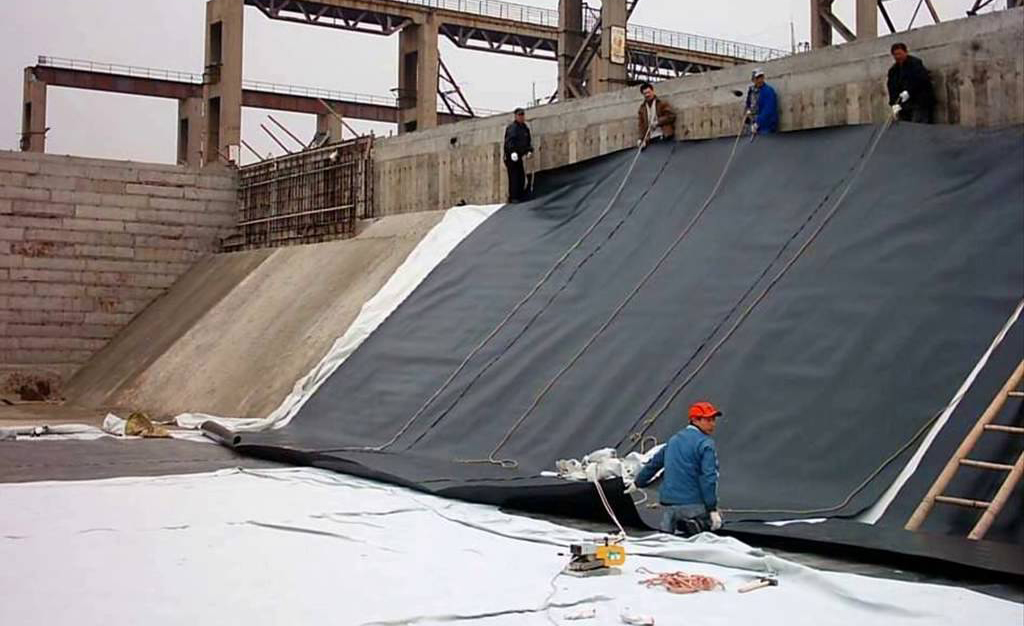Composite geomembranes, also known as multilayer geomembranes, are engineered materials that combine different types of geosynthetic materials to provide enhanced performance in various applications. The composite structure typically includes layers of geomembranes, geotextiles, and/or geogrids. Here are some common applications of composite geomembranes:
- Landfills:
- Composite geomembranes are widely used in landfill applications to provide an impermeable barrier that prevents the leakage of liquids from the landfill into the surrounding environment. The combination of geomembranes and geotextiles helps in controlling gas emissions, improving stability, and managing leachate.
- Mining and Containment Ponds:
- In mining operations, composite geomembranes are used in containment ponds and tailings dams to prevent the seepage of water and chemicals. The multiple layers help provide a robust barrier against contaminants and ensure environmental protection.
- Waste Containment:
- Composite geomembranes find applications in various waste containment facilities, such as hazardous waste storage areas and industrial waste ponds. They act as a barrier to contain potentially harmful substances and prevent their migration into the soil or groundwater.
- Water Storage Reservoirs:
- These geomembranes are used in the construction of water storage reservoirs, providing an impermeable lining to prevent water leakage. The composite structure enhances the overall durability and performance of the lining system.
- Aquaculture Ponds:
- Composite geomembranes are employed in aquaculture for lining ponds and tanks. They help create a watertight seal, preventing water seepage and ensuring efficient water management in fish and shrimp farming operations.
- Oil and Gas Industry:
- Composite geomembranes play a role in the containment and management of fluids in the oil and gas industry. They are used in applications such as secondary containment systems for oil storage tanks and for preventing soil contamination in drilling operations.
- Secondary Containment Systems:
- In industrial facilities handling hazardous materials, composite geomembranes are used in the construction of secondary containment systems. These systems help contain spills and prevent the release of contaminants into the environment.
- Tunnels and Underground Structures:
- Composite geomembranes may be used in tunnel construction and underground structures to provide waterproofing and prevent water ingress.
- Waterproofing for Civil Engineering Projects:
- In civil engineering projects like tunnels, basements, and foundations, composite geomembranes can serve as a waterproofing barrier, preventing water infiltration into structures.
- Erosion Control:
- Composite geomembranes with reinforced layers may be used in erosion control applications, providing stabilization to slopes and preventing soil erosion.

It’s essential to consider the specific requirements of each application and choose the appropriate composite geomembrane system based on factors such as material compatibility, strength, and permeability characteristics.
